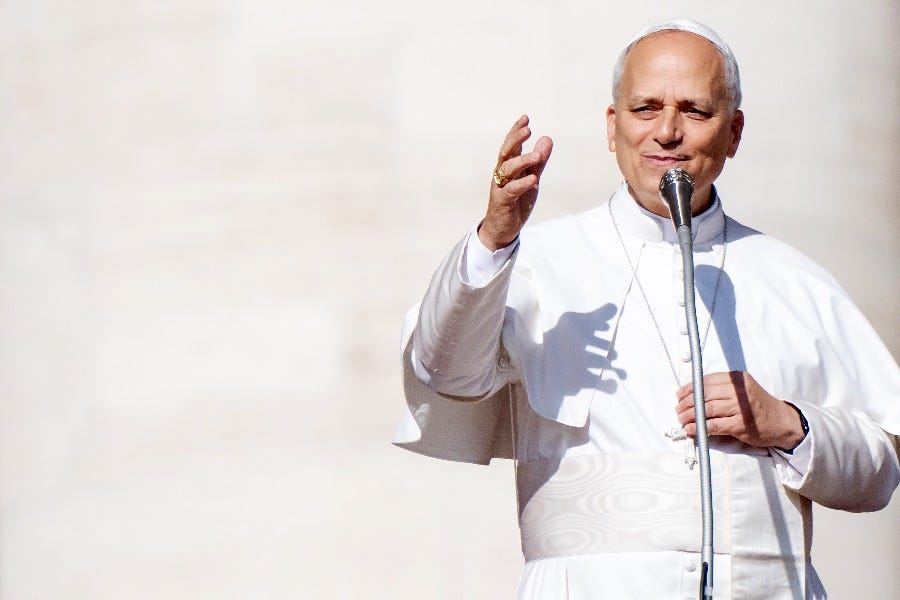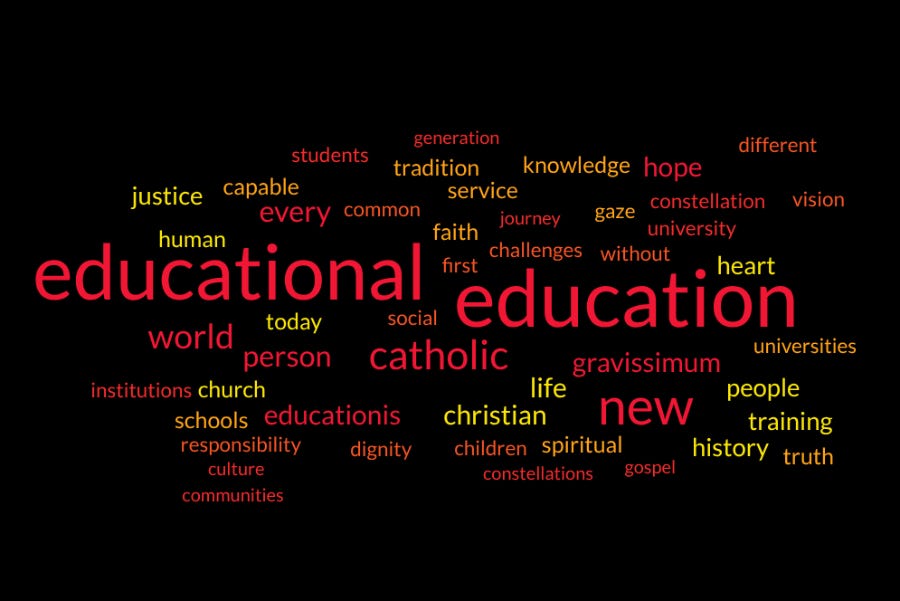Class notes: What does Leo XIV’s education letter say?
Description
Please take your seats. Today’s class is about to begin. We’re going to be focusing on an important new education document by Pope Leo XIV.

The text was released by the Vatican Oct. 28, and it’s currently available only in Italian. An English version should be available by the time you take the exam at the end of this academic year.
The document’s title is Disegnare nuove mappe di speranza, which means “Drawing New Maps of Hope.” We’ve been talking a lot about hope this year because in 2025 the Catholic Church is celebrating the Jubilee of Hope. Pope Leo signed this document during the Jubilee of the World of Education, a Jubilee Year event drawing Catholic educators from around the world to Rome.
The new text is known as an apostolic letter, one of the main categories of papal documents, alongside encyclicals and apostolic exhortations. As Pope Leo was only elected in May, he hasn’t released many documents yet. This is only his second apostolic letter.
In this class, we’re going to look at why Leo XIV published the text and what it says. There should be time at the end for a little quiz.
Why now?
The pope tells readers in the opening lines why he has released this document. He notes that Oct. 28, 2025, is the 60th anniversary of another significant text, Gravissimum educationis. This was one of the 16 documents issued by Vatican Council II, a meeting of the world’s bishops from 1962 to 1965.
The Declaration on Christian Education, as it is known, was one of the Council’s shorter documents. But it had a big impact on efforts to promote Catholic education around the world in the decades after it was issued.
Gravissimum educationis said, in a nutshell, that education is “extremely important.” That’s the meaning of the Latin title. Education isn’t just for the privileged few who can afford it, but a “universal right.” Therefore, the Church must provide educational opportunities to as many people as possible, especially the poor.
The Catholic Church then, as now, was the world’s biggest provider of education, apart from governments. Gravissimum educationis asked Catholic institutions to cooperate more closely with each other so they would bear greater fruit.
In Disegnare nuove mappe di speranza, Pope Leo says a lot has changed in the 60 years since the world’s bishops issued their message. To respond to new challenges, Catholic education needs to change too.

What does it say?
1. The preamble: It may surprise you that Leo XIV’s document on education is slightly longer than Gravissimum educationis. The pope clearly has a lot to say about Catholic education in the 21st century.
Like the earlier document, this one begins with a preamble, which describes the world of education today. Pope Leo says we are living in a time of “rapid changes and disorienting uncertainties.” Students are learning in “a complex, fragmented, digitalized educational environment.”
The pope says Catholic educators are finding new and creative ways to respond to these difficulties. If they allow themselves to be guided by the word of Christ, they will not retreat but reinvent themselves for a new era.
Pope Leo introduces an image in the preamble that will reappear later. He likens Catholic educational institutions to a great constellation of stars. Just as the stars guide sailors as they are blown across the high seas, so Catholic schools and universities can guide us in our turbulent times.
2. A dynamic history: In the second section, the pope offers a quick tour of the history of Catholic education, starting with the early Christian monks known as the Desert Fathers, who taught in parables, in a similar style to Jesus.
The pope also mentions St. Augustine of Hippo, the great 4th-century bishop who inspired the creation of the Augustinian order. You will recall that Leo XIV is an Augustinian and in his first address as pope, he described himself as a “son of St. Augustine.” Remember, it isn’t a Leo XIV document unless there’s a reference to Augustine.
The pope also refers to the huge contribution of men’s and women’s religious orders to education, highlighting saints such as Jean-Baptiste de la Salle, founder of the De La Salle Brothers, and St. John Bosco, the Salesians’ founder. He mentions Catholic women who opened up educational opportunities for girls, migrants, and other people in need, including the former slave St. Josephine Bakhita and Maria Montessori, creator of the Montessori method. The first U.S.-born pope also cites three female saints who served in America: Frances Cabrini, Katharine Drexel, and Elizabeth Ann Seton.
3. A living tradition. In the third part, Pope Leo says Catholic education is always being renewed, evolving into new forms in response to the demands of each new era. But the focus remains the same: the individual human being who is made in the image of God and capable of recognizing truth.
At this point, he introduces the figure of St. John Henry Newman, a 19th-century English convert to Catholicism. He notes that Newman once <a href="https://www.newmanreader.org/works/idea/discourse3.





